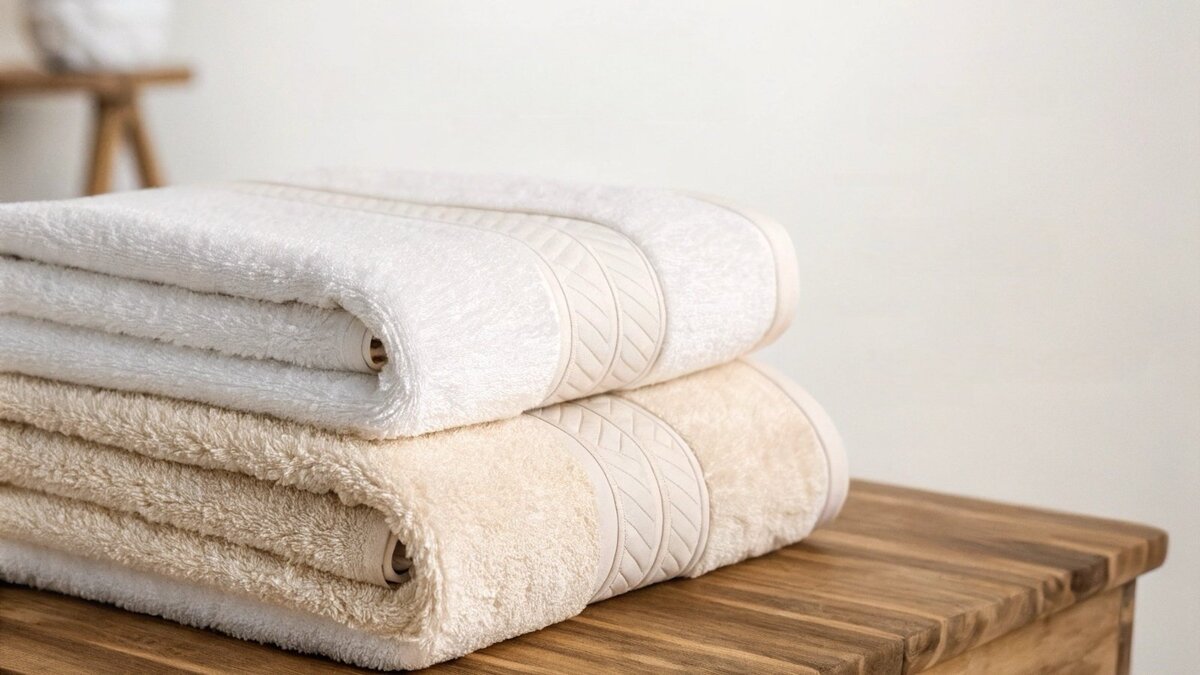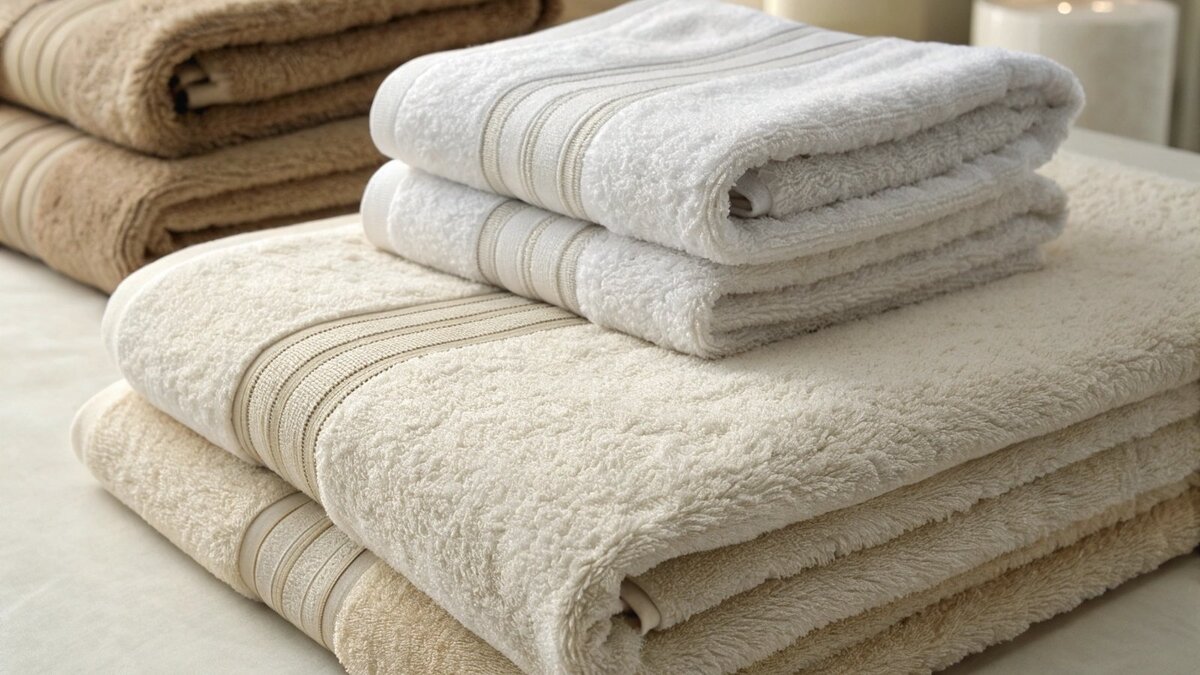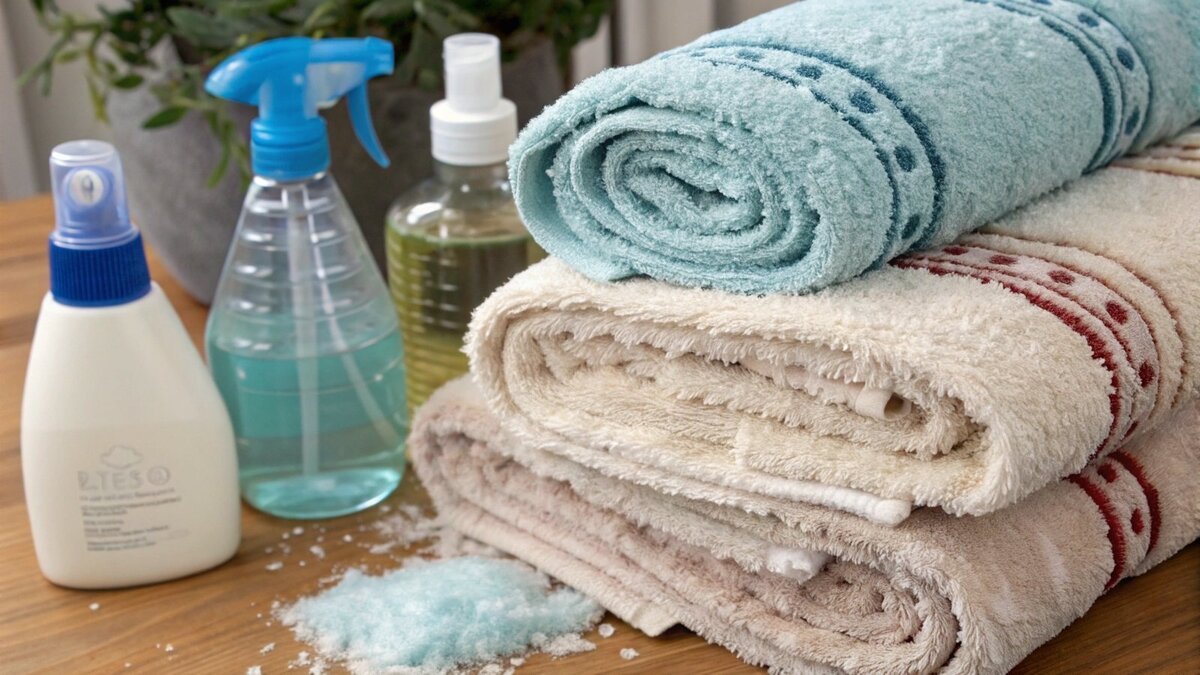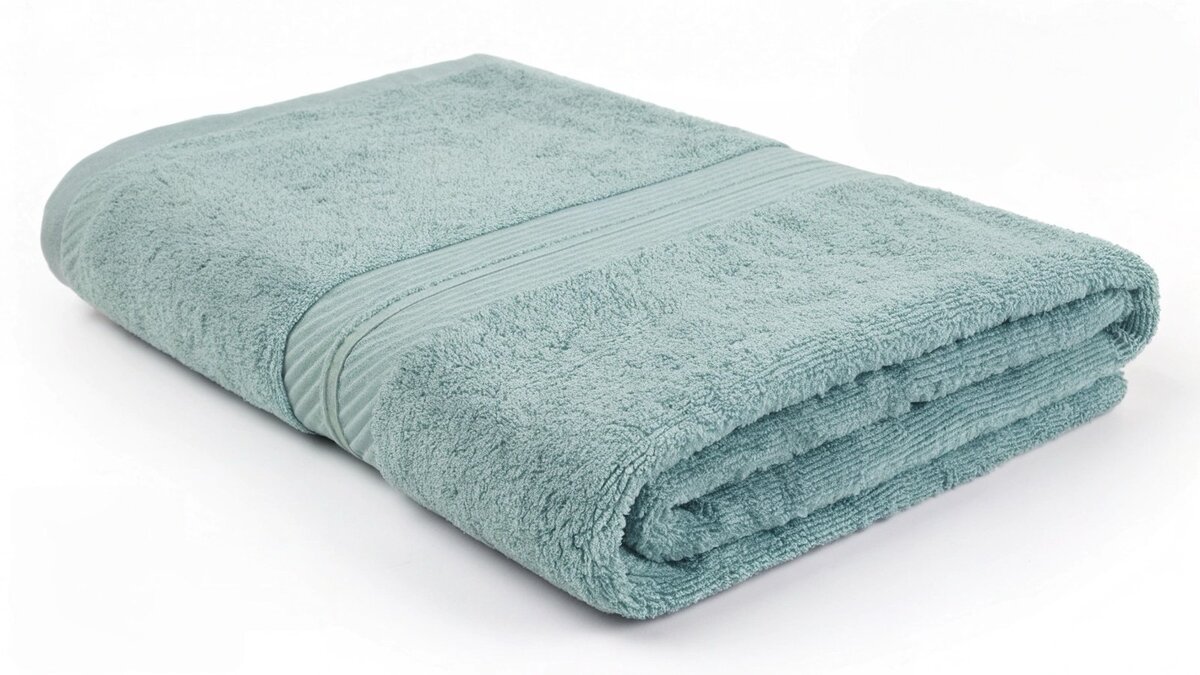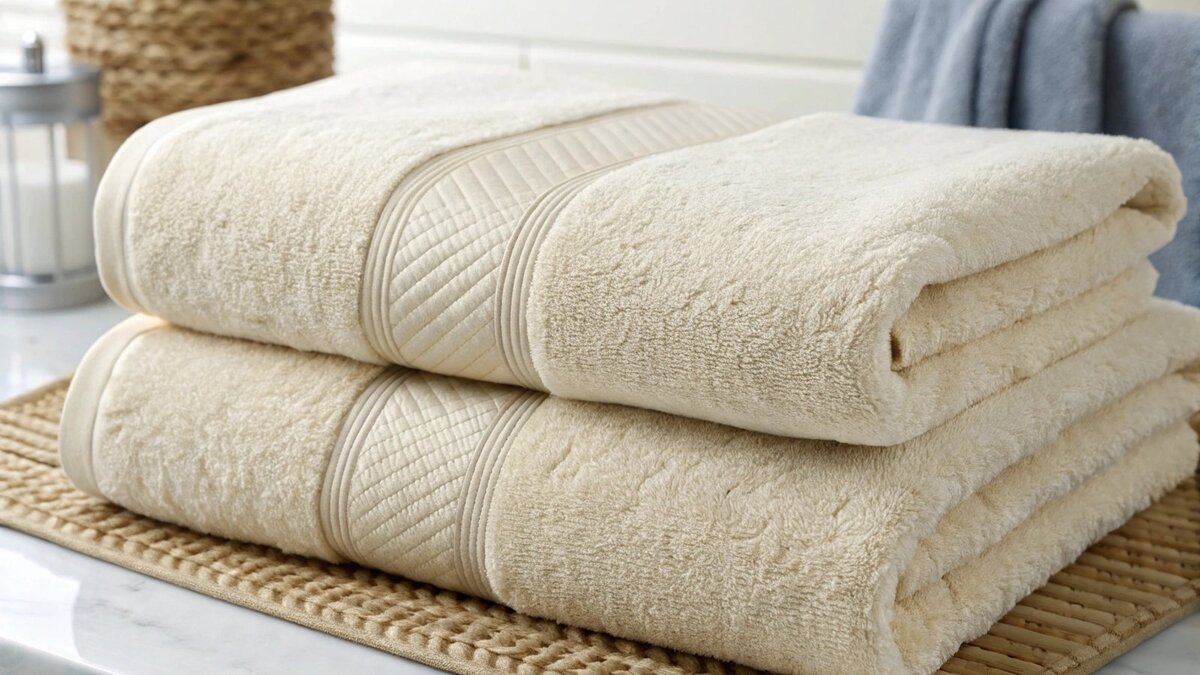Struggling with towels that just push water around? This can frustrate your customers and harm your brand’s quality reputation. Understanding what makes a towel truly absorbent is key.
A towel’s absorbency comes from three main things: the fiber type, the fabric weight (GSM), and the weave. Long-staple cotton, a high GSM (over 600), and a low-twist construction create the most absorbent towel. Proper care without fabric softener preserves this quality.
I’ve spent years in the textile industry, and the most common question I get from new buyers is about performance. It’s easy to get lost in technical terms, but getting absorbency right is not as complex as it seems. It’s a core function that defines whether your product is seen as a cheap giveaway or a premium item worth buying again. Your customers will notice the difference immediately. Let’s break down exactly what you need to look for to ensure your towels deliver the quality your brand promises, so you can make confident, profitable decisions for your business.
What type of towel is most absorbent?
Choosing the wrong material is a mistake that can cost you money and customers. When towels don’t perform, you’re left with complaints and inventory that won’t move.
Hands down, 100% cotton towels are the most absorbent, especially those made from Egyptian or Pima cotton. These premium varieties have extra-long fibers that create a massive surface area to soak up water. Microfiber is also very absorbent but offers a different feel and purpose.
When we talk about absorbency, cotton is the undisputed champion. It’s a natural fiber that can hold a significant amount of water within its structure. But not all cotton is created equal. I remember a client who wanted to launch a line of salon towels. They were focused on price, but I urged them to consider the difference between standard cotton and Extra-Long Staple (ELS) cotton like Pima or Egyptian. ELS fibers are stronger and finer, allowing us to spin them into yarns with more open loops. This creates a towel that feels softer and, more importantly, absorbs water much faster. While microfiber is technically absorbent due to its dense, fine synthetic strands, it often feels like it’s "gripping" the skin. For a luxury bath experience, nothing beats high-quality cotton.
| Material | Key Absorbency Benefit | Best Use Case | My Recommendation |
|---|---|---|---|
| Egyptian/Pima Cotton | Extra-long fibers create maximum surface area. | Luxury Bath Towels, Spa, Hotels | The gold standard for premium brands. |
| Standard Cotton | Good natural absorbency and durability. | Everyday Bath Towels, Beach Towels | A reliable, cost-effective choice for volume. |
| Microfiber | High capillary action pulls water in quickly. | Gym Towels, Cleaning Cloths, Hair Turbans | Best for performance-specific applications. |
| Bamboo (Rayon) | Very soft feel, naturally good wicking. | Baby Towels, Blends for Softness | Good option, but ensure it’s a quality blend. |
Why don’t towels absorb water anymore?
There’s nothing more frustrating than brand-new towels that seem to repel water. This reflects poorly on your product quality and leaves end-users confused and unhappy with their purchase.
Towels stop absorbing water mainly because of residue buildup. Fabric softeners and some detergents coat the cotton fibers with a waxy, water-repellent film. This buildup prevents water from reaching the fiber, killing the towel’s absorbency over time.
This is an issue I’ve helped countless clients troubleshoot. A few years ago, a boutique hotel partner called me in a panic. Their brand new, beautiful towels weren’t drying their guests. After a few questions, we found the culprit: their laundry service was using a heavy-duty fabric softener to make the towels feel extra soft out of the package. I explained that fabric softeners are the enemy of absorbency. They work by coating fibers with silicones to reduce friction, but that same coating blocks water. We also see this with new towels that have a special finish applied at the factory to enhance their shelf appeal. The solution is simple in both cases: a few washes without softener, sometimes with a cup of white vinegar, strips away the residue and restores the cotton’s natural thirst.
How to Fix & Prevent Absorbency Loss
| Problem | Primary Cause | The Fix / Prevention |
|---|---|---|
| New Towel Repellency | Factory-applied finishes. | Wash 1-2 times before first use. Use half the recommended detergent and no softener. |
| Gradual Loss of Absorbency | Fabric softener buildup. | Add one cup of white vinegar to the rinse cycle. Stop using liquid fabric softeners. |
| Stiff, Ineffective Towels | Detergent and hard water buildup. | Run a wash cycle with half a cup of baking soda, followed by a second cycle with white vinegar. |
How absorbent is a towel?
As a buyer, you need a reliable way to define and measure towel quality. Simply calling a towel "absorbent" is a vague marketing claim. Without a clear metric, you can’t guarantee performance.
A towel’s absorbency is best measured by its weight, known as GSM (Grams per Square Meter). A higher GSM means the towel is denser and has more cotton fibers to soak up water. Towels in the 600-900 GSM range are considered highly absorbent and luxurious.
GSM is the single most important number you need to know when sourcing towels. It tells you the density of the fabric, which directly relates to its performance and feel. Think of it like thread count for sheets. I always walk our clients through the different GSM tiers to match their specific needs. For a gym client, we might suggest a 400 GSM towel. It’s lightweight, absorbent enough for a workout, and dries very quickly, which is perfect for high-turnover use. But for a luxury hotel or a retail brand launching a premium bath collection, we start the conversation at 600 GSM and often go up to 700 or 800 GSM. These towels are noticeably heavier, plusher, and provide that spa-like experience of being wrapped in a thick, thirsty cocoon. The trade-off is a longer drying time, but for a premium product, the unparalleled absorbency is worth it.
Understanding GSM Ranges
| GSM Range | Weight & Feel | Absorbency Level | Common Uses |
|---|---|---|---|
| 300 – 400 GSM | Thin, lightweight | Standard | Gym towels, kitchen towels, promotional items |
| 400 – 600 GSM | Medium weight, soft | Very Good | Standard bath towels, beach towels |
| 600 – 900 GSM | Heavy, plush, dense | Excellent / Luxury | Premium bath towels, luxury hotel & spa towels |
What towels are best for most liquid absorption?
You need the absolute best-performing towel for maximum liquid absorption, with no compromise on quality. For a premium spa or retail line, anything less than perfect is not an option.
For maximum absorption, the best towel is a high GSM (700+), zero-twist towel made from 100% Egyptian or Pima cotton. This specific combination creates long, open fiber loops with a huge surface area, allowing it to soak up liquid instantly and hold an incredible amount.
When a client comes to me and says, "Dylan, I need the most absorbent towel possible," I know exactly what to build for them. We combine the three critical elements we’ve discussed into one ultimate spec. First, we use the best raw material: 100% extra-long staple cotton. Its inherent fiber length gives us the strength we need for the next step. Second, we specify a high fabric weight, usually 700 GSM or more, to pack in as much thirsty cotton as possible. Finally, and this is the real secret, we use a zero-twist or low-twist weave. Standard yarns are twisted to give them strength. But with strong ELS cotton, we can create yarns with almost no twist at all. This leaves the cotton fibers open and unt compacted, creating thousands of tiny loops that act like sponges. The result is a towel that is unbelievably soft, plush, and drinks water on contact. It’s the pinnacle of towel performance.
Spec Sheet: The Ultimate Absorbent Towel
- Fiber: 100% ELS Cotton (Egyptian or Pima)
- Weight: 700-900 GSM
- Weave: Zero-Twist Terry
- Construction: Double-stitched hems for durability
- Initial Care: Wash before use to remove any loose lint and maximize absorbency.
Conclusion
Towel absorbency isn’t magic; it’s a result of smart choices in material, weight, and weave. Focusing on cotton, high GSM, and proper care ensures a superior, absorbent, and profitable product.

